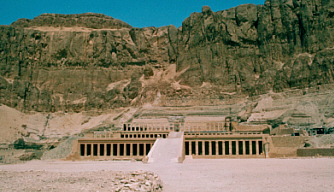|



|
For more than a thousand years, Luxor, was the religious
capital of Egypt. The Greeks called it Thebes, "the
ancient Thebes of the hundred doors", until the Arabs
baptized it Medinet el Kussur, "City of Palaces", from
which the name Luxor derived.
It was the capital of the Pharaohs of the New Empire
which coincided with the greatest period of splendor in
the Egyptian history. Evidence of the city's glorious
past can be seen in the temple of Karnak erected to the
glory of Amon- Ra, King of Gods. Measuring 260 meters
long it was started by Pharaoh Amon-Ofis III and later
completed by Ramses II. The celebration of Opet closed
with the priests carrying the sacred boat of Amon-Ra
from the temple of Karnak, to the sanctuary of Luxor's
Temple. This procession was always accompanied by a
celebratory crowd singing and performing sacred dances.
On the West Bank, the kings of ancient Egypt, including
Seti I Ramses VI and Tubankhamon, thought they would
rest undisturbed during their journeys into eternity.
The valleys hosting the tombs of the kings, queens,
nobles and court dignitaries follow on one after
another. Beyond the temple of Queen Hatshepsut you can
find the Colossi of Memnon, so called by the Greeks in
memory of Homeric hero Memnon, who was said to emerge at
sunrise from the statues to greet his mother Eos
(Aurora) with musical notes. |